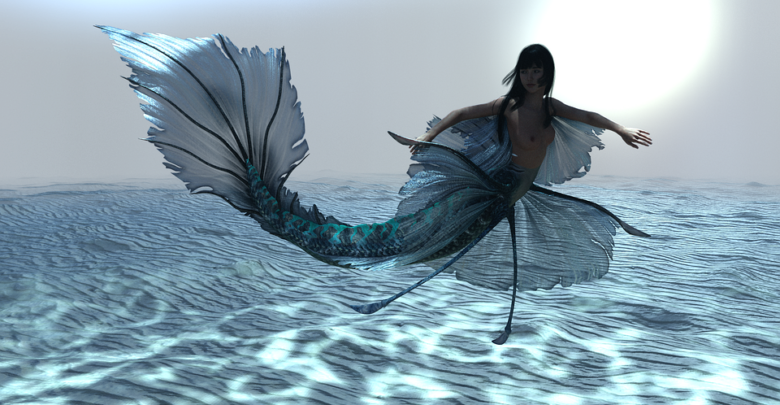Are Mermaids Real

Are Mermaids Real?
Legendary sea creatures known as mermaids—those half-human, half-fish sirens of the sea—have been recorded in maritime cultures for ages.
They are mentioned in The Odyssey, an epic poem by Homer of ancient Greece. Mermaids were the wives of strong sea dragons in the ancient Far East, acting as dependable messengers between their husbands and the emperors on dry land.
The Australian aboriginals refer to mermaids as “yawkyawks,” which may allude to their captivating singing.
It’s possible that the idea of mermaids dates back to the very beginning of our existence.
Around 30,000 years ago, during the late Paleolithic (Stone Age), when modern humans first acquired control of the land and, presumably, started to sail the seas, the first magical feminine characters were shown in cave paintings.
In mythology, chimeras, or half-human creatures, are common. In addition to mermaids, other examples include intelligent centaurs, reckless satyrs, and terrifying minotaurs.
But do mermaids really exist? Aquatic humanoids have never been found to exist. Why therefore do they occupy almost all seafaring peoples’ collective unconsciousness?
It is preferable to leave answers to that query up to historians, philosophers, and anthropologists.
Also Read: Mami Wata: The Scared Female African Water Goddess
Mermaid mythology
Mermaids and mermaid-like creatures have been depicted in mythology for countless years.
The first mermaid myths may have started around 1000 B.C.; legends claim that a Syrian goddess tried to transform into a fish by jumping into a lake, but her exquisite beauty prevented it, and only her bottom half changed.
Since then, numerous other mermaid tales have surfaced in folklore across numerous civilizations. For instance, the Caribbean water spirit Lasirn and the African water spirit Mami Wata both take on the appearance of mermaids.
Christopher Columbus is the most well-known explorer to have claimed to have seen mermaids throughout history.
According to the American Museum of Natural History, Columbus claimed to have seen mermaids close to Haiti in 1493; he described them as being “not as gorgeous as they are painted, for strangely in the face they resemble like men.”
Captain John Smith is said to have seen a big-eyed, green-haired mermaid in 1614 off the coast of Newfoundland in Edward Rowe Snow’s “Incredible Mysteries and Legends of the Sea” (Dodd Mead, January 1967).
Smith reportedly fell in “love” with her before realizing she was a fish from the waist down.
According to experts, Columbus, Smith, and other mermaid-spotting explorers actually saw manatees and dugongs, which are large marine creatures.
In fact, mermaids, like the Loch Ness Monster, may just be a case of mistaken identity despite historical and contemporary “sightings” of the fabled water monsters.
Also Read: Top African Mythical Creatures From African Mythology
A study proving that mermaids are real and exist from Japan
A study proving that mermaids exist has been released by a Japanese scientific team.
Following the discovery of a 300-year-old mummified mermaid measuring 12 inches (30.48 cm) in length off the coast of the Japanese island of Shikoku, this was the case.
A temple in Asakuchi City presently houses the mummified mermaid. The creature’s hairy head, twisted face, and pointed teeth are what make up its top half. It has a fishtail-shaped foot.
A team of researchers from Kurashiki University of Science and Arts, a private university in Kurashiki, Okayama, Japan, recently performed a CT scan on the body to learn more about the creature’s origins.
According to a story in The Independent, Hiroshi Kinoshita, the head of the new research project at the Okayama Folklore Society, says that “the unusual creature could have religious significance.”
Mermaids are connected to immortality in Japanese mythology. Yao Baekuni and Ningyo’s tale is among the ancient stories, according to Japanese folklore (a human fish or mermaid).
According to this legend, a fisherman from the province of Wakasa caught a strange fish and neglected to toss the wicked fish.
She lived to reach 800 years old, and anyone who consumed mermaid meat lived longer, although it was thought that angling for Ningyo would bring storms and bad luck.





